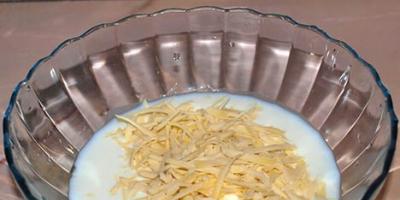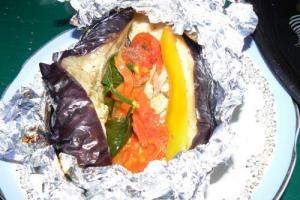With the arrival of spring and the beginning of summer, everyone is looking forward to the ripening of raspberries. This is not only a tasty berry, but also a very healthy one, as even children know, who often ask the question: when will raspberries ripen? Its flowering and ripening depends on the variety and region of growth.
Raspberry is a deciduous shrub that can grow in wild natural conditions on forest edges, in clearings, near the coast, and is also grown in gardens and farms. Some varieties of polydrupe raspberries have been known since the 16th century.
It is divided into several types:
- traditional, multiplies quickly, bears fruit once per season;
- remontant, reproduces slowly, bears fruit 2 times per season;
- large-fruited, the berries are particularly large in size;
- standard, bushes with branched shoots similar to small trees.
- forest, growing near rivers and in forests, the berries are small but very fragrant.
Each species has its own varieties, which have different terms ripening raspberries. In Russia, wild raspberries ripen when the temperature reaches more than 23 degrees, starting from the end of June, mid-July, depending on the climate zone.
When raspberries begin to ripen (table)
The growing season for raspberries begins in April, but depending on climatic conditions and the region of growth, the ripening period of the same varieties may be delayed by 5-15 days.
Varieties are classified by age into main and intermediate:
- Basic: early, middle, late.
- Intermediate: mid-early, mid-late.

Harvesting lasts for 1-1.5 months, after which the biennial shoots dry out or are cut off.
When can you pick berries from early varieties?
The growing season of raspberries begins from April to mid-May, flowering lasts 1.5-2 weeks, late May - early June, after which polydrupes are formed, the ripening of which occurs in mid-June - 1st decade of July. The harvest lasts about 1-1.5 months, until the end of July. The most popular varieties of early raspberries: Solnyshko, Cumberland, Scarlet Sails.
Medium ripening
In raspberry varieties with an average period, the ripening period begins from the first days of May to mid-June, the first flowers appear in the 2-3rd decade of June.

- Mid-early: News Kuzmina, Izobilny, Luck, Balm, Ugolek, Hussar, Pride of Russia, Arbat, Yellow sweets.
- Middle term: Brigantine, Latham, Shy.
- Middle-late: Tarusa, Peresvet.
Beginning of harvesting fruits from late-ripening crops
The growing season of late varieties of raspberries begins in late June - mid-July, color appears in the 3rd decade of July - 2nd decade of August. The harvest begins from early August to September. Late varieties include: Sputnitsa, Arabesque, cut raspberry.
In what months are remontant varieties harvested?
Remontant raspberries have special ripening periods, which can bear fruit twice during the season. It is also classified by timing, starting with the first fruiting, the second occurs after pruning, the formation of young shoots and flowering after 1-2 months and can last until the first frost.

In the Northern regions, the 2nd fruiting often does not occur due to a sharp change in weather conditions:
- Early: Yaroslavna, Morning Dew, Penguin.
- Mid-early: Lilac mist, Yellow giant, Golden domes.
- Middle: Hercules.
- Mid-late: Diamond, Orange Miracle, Golden Autumn, Bryansk Miracle.
- Late: Kalashnik, Apricot.
When do wild raspberries ripen in Russia?
Summer residents and travelers who explore forest areas are concerned with questions: when can you pick raspberries in the forest, in what month will raspberries in the forest begin to ripen? The harvest of ripe forest raspberries occurs in mid-July and until the end of August; sometimes in September you can find thickets with ripe fruits in the south of the country.
Forest raspberries have a two-year life cycle; in the first year, young green shoots grow with a large number of sharp thorns, light green leaves above, white-green below, slightly pubescent. Flowers form on woody shoots of the second year of life from late June to late July, depending on the region.

On the territory of Russia, common red forest raspberries are widespread in the forest and forest-steppe zones, on the edges of forests, swamps, and river edges.
How to properly pick raspberries from bushes?
To properly pick raspberries and not crush them during transportation, you must follow the following rules:
- The container and hands are thoroughly washed before collection. Raspberries are very delicate, wrinkle and drain quickly, so it is not recommended to wash them. To avoid excess dirt and bacteria, keep your hands and container clean.
- The time for harvesting raspberry fruits depends on the variety; usually after flowering it takes 1.5-2 weeks for the polydrupe to ripen. It is better to collect in dry weather, in the morning after the dew has dried or in the evening, then the berries will drain less. After the first harvest, raspberries are harvested every 2-3 days.
- The container should be shallow, then the raspberries placed in it will lie in 2-3 layers and will be less likely to choke under their own weight. The container is tied to the waist or placed on the ground so that two hands are free. Hold a branch of a raspberry bush with one hand, and carefully remove the berries with the other. The mature one is easily removed, leaving a white receptacle on the bush.

If the place where raspberries are processed is far away or they are going to be sold, then you can cut them off with the stem, but this method is more labor-intensive. Especially if it is collected for processing, you will have to spend time removing the stalk with a white receptacle.
Accessories for quick harvesting
For the industrial harvest of raspberry multidrupes, special combines are used; they work on the principle of shaking the bushes, thanks to rotating mechanisms on which thin rods are attached. A machine crushes the fruits onto a conveyor from both sides of a row of raspberry bushes. For such combines, bushes are planted at a distance of 2-2.5 m and mounted on horizontal trellises. To operate, you need 3 people, 2 assemblers and 1 driver.
This method saves time on collection and the cost of attracting workers. The only disadvantage of raspberry harvesters is their high cost.

Popular models for picking raspberries:
- Oxbo 9120;
- Korvan;
- Natalka;
- Joanna.
For picking berries on ordinary garden plots use homemade devices or manual harvesters like a rake with a box. Processing the bushes with a manual harvester occurs by grasping the bushes with a rake, and light shaking movements knock the berries into a special box.
The ripening time of raspberry fruits in Russia may vary, especially in middle lane and in the northern regions due to sudden changes in weather conditions. It is important to choose the right variety and high-quality seedlings for the region in order to obtain a harvest in large quantities and on time.
Material prepared by:
Deputy Executive Director of the Association of Gardeners of Russia (APYAPM), leading specialist of the Association of Gardeners and Nurseries (ASP-RUS) on berry crops

Shchekotova L.A.
Candidate of Biological Sciences, scientific consultant of the ASP-RUS Association

Danilova T.A.
Specialist of the Association ASP-RUS, student of MichSAU
Using material from J. Ciesielska – E. Malusa
Raspberry productivity and fruit harvesting
 Black raspberry variety – Glen Glova
Black raspberry variety – Glen Glova
The yield of raspberries in production areas can reach up to 15-16 t/ha when cultivating highly productive varieties such as Molling-Exploid and Zeva. The average yield is 10-12 t/ha, produced by such varieties as Glen-Glova, Glen-Moy. Remontant varieties have a yield of 3 to 10 t/ha, on average 5-6 t/ha. The highest yields are obtained where there is sufficient water supply in August, during the period of flowering and fruit ripening.
Raspberries can be cultivated in one place for 10-15 years, but the commercially significant period does not exceed 7-8 years, after which there is a significant decrease in yield due to the spread of viruses.
Approximately 30-40 days after flowering, the fruits begin to ripen, become soft, and are easily separated from the fruit. At this stage of ripening the fruits require careful handling and remain in good condition for several days after harvest if they are more long time are on the plant - they lose appearance, soften, become very susceptible to rot. Even insolation during the ripening period can damage the fruits, making them pale and watery.
 A special box with high legs for collecting raspberries
A special box with high legs for collecting raspberries
The red raspberry harvest period lasts 4-6 weeks, starting in June - the earliest ripening varieties ripen, and the late varieties ripen at the end of August, the main harvest is harvested in July. Fruit ripening on the plantation is extended, but for each variety the period of mass harvest corresponds to the period of fruit ripening in the middle part of the shoot. Harvesting should be done every 2-3 days to obtain good quality fruits But you can collect fruits every day during the period of mass ripening, especially on days with high temperature air. The frequency of collection depends on the variety. Varieties with tender, juicy fruits and smooth ripening can be collected quite easily and quickly, for example, Glen Ample, Lashka, Norna, Ross, Latham. At the same time, the fruits of such varieties as September, clones of Jewel, Glen-Glova and other new breeding forms can be harvested over a longer period of time. In some varieties - Viten and September, the fruits, although red, are difficult to separate from the fruit stem; they must be left on the bush for at least one more day.
 Glen Ample – traditional, industrial raspberry variety
Glen Ample – traditional, industrial raspberry variety
The Primocanes variety is characterized by a long harvest period - 6-7 weeks, and a more uniform ripening of fruits - from the beginning of August until the first autumn frosts.
Raspberries, which are hand-picked, have the characteristic color of the variety and are free from rot, are intended for fresh consumption or freezing. Rejected fruits are processed for the production of juices and jams.
 Berries of a photoneutral raspberry variety – Polyana
Berries of a photoneutral raspberry variety – Polyana
Scientists have tried to find more objective criteria for determining optimal time picking fruits, but in practice they use a more practical and very subjective approach - fruit color and tear strength. French researchers have developed a scale in which five stages of distinguishable color changes are used to determine the direction of crop use. The color change occurs in two stages: the first, in which there are pigments and the fruit changes color from white to pink-red (stages S1-S2), the second - degradation and oxidation, the appearance of dark red and red-violet pigments (stages S3, S4 and S5). According to this scale, it is recommended to harvest the fruits at stages S2-S3, when they are easily separated from the fruit. For a product that will be exported, it is necessary to harvest at the S2 stage of fruit ripening and store the fruits properly, as color degradation occurs quickly, especially for fruits stored at room temperature.
 Doctor of Agriculture Sciences Muhanin I.V. demonstrates raspberries collected in cardboard boxes
Doctor of Agriculture Sciences Muhanin I.V. demonstrates raspberries collected in cardboard boxes
Raspberries are mostly picked entirely by hand, as the fruit is very delicate and must be handled very carefully. Picking berries is a labor-intensive process, but it is a crucial step for every grower. The picker can collect from 15 to 45 kg of fruits per working day, depending on the degree of fruiting, the purpose of the product and cultivation technology.
After picking, the berries should be placed into 100-250 g containers as quickly as possible, even if they are intended for freezing, especially with an individual freezing system (IQF). Very useful for manual collection have tables on which containers with raspberries are placed in baskets or boxes made of plastic or paper; it is advisable that the platform moves along the row behind the pickers. Another option is used, in which the box or basket is secured to the collector using aluminum straps. The filled container is left in the shade of the bushes. Fruits with noticeable defects - berry shape, size or color - are used for the preparation of jams, concentrates, natural juices or frozen in larger containers - 2-5 kg. For both types of harvesting, it is important to load within a short time - no more than 3-4 hours, then there should be no manipulation or shaking, which significantly reduces the quality of the fruit.
 Tall stands for boxes used when picking raspberries
Tall stands for boxes used when picking raspberries
In a number of countries, advanced harvesting technologies are used (USA, Denmark, Scotland, New Zealand) - introduce mechanized harvesting. In fact, if there are not enough workers, mechanized harvesting is the main condition for expanding the production of this crop. This method is widespread in the USA: for example, in the states of Oregon and Washington, about 85% of red raspberries are harvested by combine, but the further path of the product determines its quality - such fruits are processed.
 Harvesting raspberries using a trailed combine harvester
Harvesting raspberries using a trailed combine harvester
To make a decision on the widespread use of machine fruit removal technology, the plantation must be specially prepared. The machine must have a passage on each side of the raspberry line. Plants in a row should be the same height, shoots should not bend towards the ground. To level the height of the plants, the upper part of the shoots, collecting them in bunches, is shortened by 15-30 cm.
With a combine, the fruits are removed by shaking (the Littau combine, developed in the USA, and Danpluk) or using vertical vibrating drums with teeth (Pattenden, created in Scotland, and Braud Vectur - made in France). Vertical drum fruit pickers pick up fruit branches by vibrating teeth mounted on a rotating drum. In shakers, the fruit stalks are separated from the fruit by shaking. The fruits are collected in the machine tray and then transferred to the sorting table. The harvest is harvested using these two types of combines, and to control the products you need from 5 to 7 people, depending on the purpose of the product (processing or using whole fresh fruits).
 Berry harvester
Berry harvester
IN Lately in New Zealand, a Peco machine was developed that harvests only half of the row; it was developed for this purpose new system agriculture (Lincoln Canopy System). Fruiting shoots should be inclined horizontally on both sides of the row, their position should be fixed on a wire stretched 50 cm from the ground, while new shoots should remain free growing. At the top of the machine there are vertical blades that shake the branches, and at the bottom there is a conveyor belt, along which the fruits fall into containers. This harvester does not damage the suckers, and the harvested fruits are of high quality, which allows them to be consumed fresh or used for freezing (IQF). Another positive aspect is the ability to collect fruits in the absence of pickers and in mountainous areas. However, despite the low cost of the machine, large labor costs are required to install the trellis, and the plantings must be planted with varieties that have strong growing shoots.
 O.V. Zhbanov on an industrial raspberry plantation of the photoneutral variety Polyana
O.V. Zhbanov on an industrial raspberry plantation of the photoneutral variety Polyana
Factors limiting the introduction of mechanized raspberry harvesting are associated with crop losses, damage to shoots and limited life of plantings. For this type of harvesting, it is necessary to select varieties characterized by easy fruit detachment. In addition, it is important to have variety in the length of the shoots, including varieties with powerful shoots, on which the fruits ripen more easily. During mechanized harvesting, damage to plantings can be caused - annual shoots may be damaged. Possibility of use mechanical means should be assessed based on economic analysis.
A combine harvester harvests 0.2 - 0.5 hectares in 1 hour, depending on the type of machine, the number of fruits on the plants and the quality of the grown product. In accordance with the instructions, the process of collecting fruits from 1 hectare can take 30-70 hours. The productivity of one picker is 6-20 acres per season, with another 5-7 people working with him. Based on an analysis of the economic activities of producers in France, it is shown that the economic efficiency of mechanized raspberry harvesting is still lower, this conclusion was made by economists. Combine harvesting becomes economically feasible if you extend the period of its use for harvesting fruits of other crops.
 High quality raspberries
High quality raspberries
The fruits of black and purple raspberries ripen much more quickly than those of red raspberries, so the harvest is completed within 1-2 weeks. To do this, you need to carry out 2-3 harvests to collect the main harvest; the fruits of these forms of raspberries are less damaged, even if they are very ripe. In the United States, where these types of raspberries are widespread and the berries are used mainly for processing, harvesting is carried out using combines.
The ripening of the crop occurs gradually and depends on the weather. In good weather the berries ripen quickly, in rainy or cold weather they ripen more slowly. Raspberry fruiting begins in July and can last up to 2 months.
At the beginning of raspberry fruiting, the harvest is usually small; when the bulk of the berries ripen, they increase. At the end of fruiting, when only small berries of the middle and lower branches remain, the yield decreases again. In good weather, raspberries are picked every other day or two, in too hot or rainy seasons - daily. At the end of fruiting, the berries can be harvested after 2-3 days. You cannot pick berries early in the morning until the dew has dried, and soon after rain, picking wet berries is allowed only in as a last resort, during prolonged wet weather. At the same time, they are immediately put into processing.
Raspberries are considered ripe when they acquire a characteristic color. Berries intended for transportation are not brought to full ripeness. For consumption and processing, the berries can be picked completely ripe. Such berries are sweeter, tastier, and more aromatic.
Raspberries are removed with part of the stalk. Separate from the stalk by pinching it with two fingers. If the berries are crowded and have a short stalk, they are cut with small scissors or, in extreme cases, removed without the stalk. When plucking or cutting, do not touch the berries directly with your fingers. Raspberries are very delicate and, if handled carelessly, become easily wrinkled.
… To avoid a hangover, drink 2-3 tablets of activated carbon 10-15 minutes before the first glass and then repeat the procedure every hour...
...If in the salt shaker all the time salt sticks together , you need to put a piece of paper napkin on the bottom of the salt shaker and periodically change this piece of paper...
... To get rid of the unpleasant smell in the room , set fire to a small piece of dry orange or lemon zest...
...Plastic cutting boards need to be washed especially thoroughly, better means with antibacterial additives...
... Recipes can be simplified where required chopped almonds , replacing it with toasted oatmeal…
...If before washing in washing machine turn your jeans inside out inside out, they will last longer...
… Cut lemons They last longer if they are placed cut side down on a small plate sprinkled with sugar...








